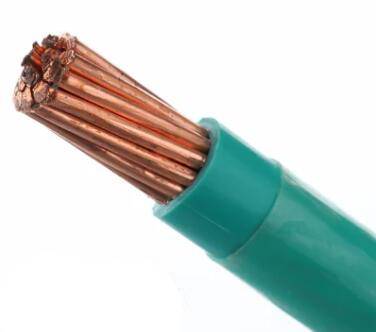Conductive Chronicles: Unraveling the Common Types of Conductors in Electric Wires
2023-12-26
Introduction:
At the heart of every electrical system lies a network of conductors, the lifelines that facilitate the flow of electricity. These conductors, typically encased in insulating materials, come in various types, each tailored for specific applications based on factors like conductivity, flexibility, and cost. In this blog, we will embark on a journey through the common types of conductors used in electric wires, shedding light on their unique properties and applications.
1. Copper Conductors:
Properties:
- High Conductivity: Copper is renowned for its excellent electrical conductivity, making it a top choice for conductors.
- Ductility: Copper is highly ductile, allowing it to be drawn into thin wires without losing its conductivity.
- Corrosion Resistance: Copper exhibits good resistance to corrosion, contributing to its longevity and reliability.
Applications:
- Power Transmission: Copper conductors are widely used in power transmission lines due to their high conductivity.
- Household Wiring: Copper wires are commonly employed in residential and commercial building wiring.
- Electronics: Copper is found in various electronic devices and printed circuit boards.
2. Aluminum Conductors:
Properties:
- Lightweight: Aluminum is lighter than copper, making it a cost-effective choice for certain applications.
- Corrosion Resistance: Aluminum possesses natural corrosion resistance, contributing to its durability.
- Lower Cost: Aluminum is generally more economical than copper, making it a cost-effective option for large-scale projects.
Applications:
- Power Distribution: Aluminum conductors are often used in power distribution lines.
- Overhead Power Lines: The lightweight nature of aluminum makes it suitable for overhead power lines.
- High-Voltage Transmission: Aluminum conductors are employed in high-voltage transmission applications.
3. Aluminum Alloy Conductors:
Properties:
- Enhanced Strength: Aluminum alloys offer improved strength compared to pure aluminum.
- Lightweight: Like pure aluminum, aluminum alloys are lightweight.
- Conductivity: Aluminum alloys strike a balance between strength and conductivity.
Applications:
- Aerospace Industry: Aluminum alloy conductors find use in aerospace applications due to their lightweight and durable nature.
- Overhead Power Lines: Aluminum alloy conductors may be used in overhead power transmission.
4. Copper-Clad Aluminum (CCA) Conductors:
Properties:
- Cost-Efficiency: CCA conductors combine the conductivity of copper with the lightweight nature of aluminum, offering a cost-effective alternative.
- Lightweight: CCA conductors are lighter than pure copper conductors.
Applications:
- Coaxial Cables: CCA conductors are commonly used in coaxial cables for applications like data transmission.
- Speaker Wires: CCA conductors find use in speaker wires for audio systems.
Conclusion:
The world of electric wires is woven with a diverse array of conductors, each with its unique set of properties and applications. From the tried-and-true copper to the lightweight aluminum and innovative alloys, the choice of conductor depends on factors such as conductivity requirements, cost considerations, and the specific demands of the application. As technology continues to advance, the evolution of conductors plays a crucial role in shaping the efficiency, reliability, and adaptability of electrical systems that power our interconnected world.



